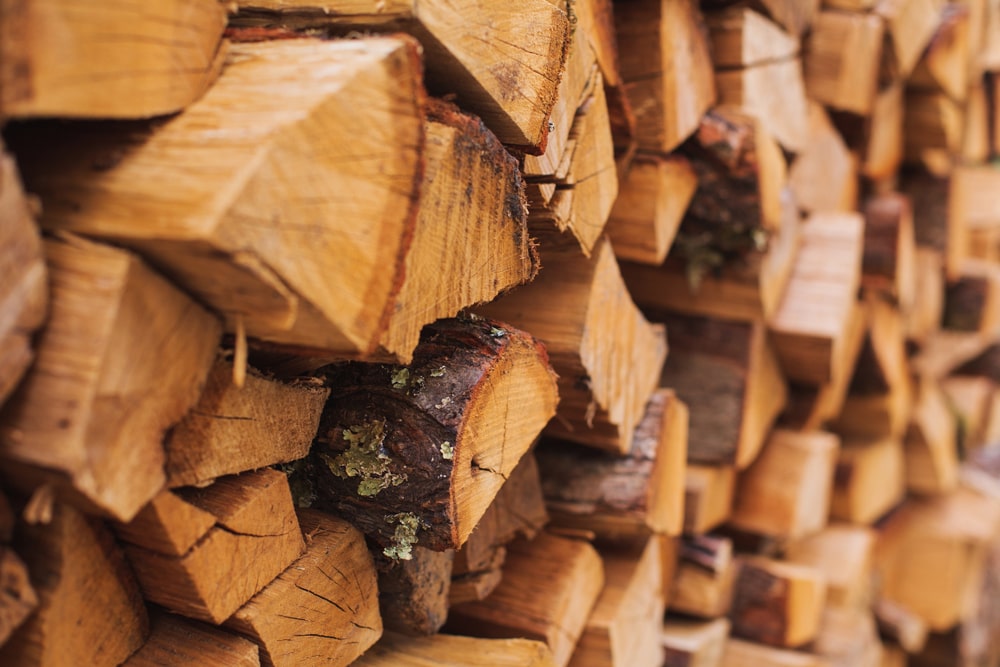Ahh, nothing quite like the crackle of a fireplace, or the warm and welcoming heat of a wood-burning stove or furnace. And, just like any other appliance, the type of fuel you choose for your wood-burning appliances matters.
In this article, we’ll discuss the basics about choosing the proper type of firewood, storing it, burning it effectively, and more. Let’s get started.
Choose Seasoned, Dry Firewood For Maximum Heat And Efficiency
First things first, you’ll want to make sure that you burn seasoned, dry firewood in your furnace, stove, or fireplace. Seasoned wood will create heat more efficiently, and create less creosote, which helps keep your flue safe and clear.
All firewood contains water, but fresh wood contains up to 45% water. While it may burn, a lot of energy will be used to vaporize that water and dry the wood before it burns, which means less heat in your home.
Dried wood (often called “seasoned) usually has only 20-25% water. To dry out wood, cut it 6 months to a year in advance, and then store it somewhere that air can circulate through it. The sun and wind will remove excess moisture.
How do you know when wood is seasoned? Look for:
- Darkened ends, with visible splits and cracks caused by moisture evaporation
- Light weight. Green wood is very heavy, but seasoned wood is lighter due to moisture loss
- A clear, hollow “clunk” sound when you knock two pieces of wood together
Storing Your Firewood
Firewood storage is critical. Even if your firewood is seasoned, it will absorb rain and snow if it’s stored improperly, causing it to rot or be unfit for burning.
You should store your wood off of the ground and protect it from weather-related moisture. A wood shed with open sides is the ideal place to store your wood. If you don’t have a wood shed, keep your wood in a pile, in a sunny location. Cover it on rainy or snowy days, and uncover it when it’s sunny.
Don’t keep all your wood too close to your house, as it’s a magnet for termites. Keep only a week or so worth of wood by your home, replenishing it as necessary.
Buying Firewood
You can chop wood yourself, of course, but many prefer to buy pre-dried, seasoned firewood to save themselves the time and labor. The most common measure is a cord, which is an 8x4x4 stack – which comes out to 128 cubic feet of wood.
Because wood is sold by volume, not weight, do your best to buy only hardwood, as it’s a denser material and will offer more heat per cord. If you’re not buying exclusively hardwood, you may be able to negotiate a better price on your purchase.
A full cord of wood can on average heat an entire small house for up to 4 months, though this may vary based on your stove or furnace, insulation, climate, and a number of other factors.
Know How To Pick And Use Firewood!
Choosing the right wood will help you stay more comfortable in the cold and avoid dangerous creosote buildup. So follow these tips – and have a CSIA certified chimney sweep in Jacksonville inspect your chimney annually to make sure it’s safe!

